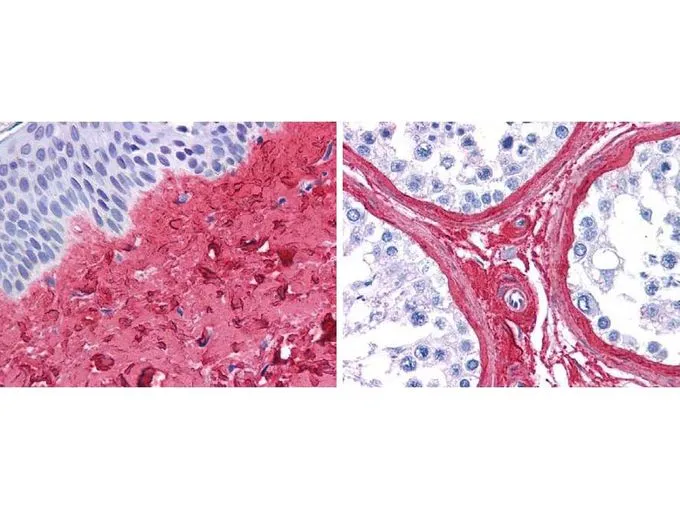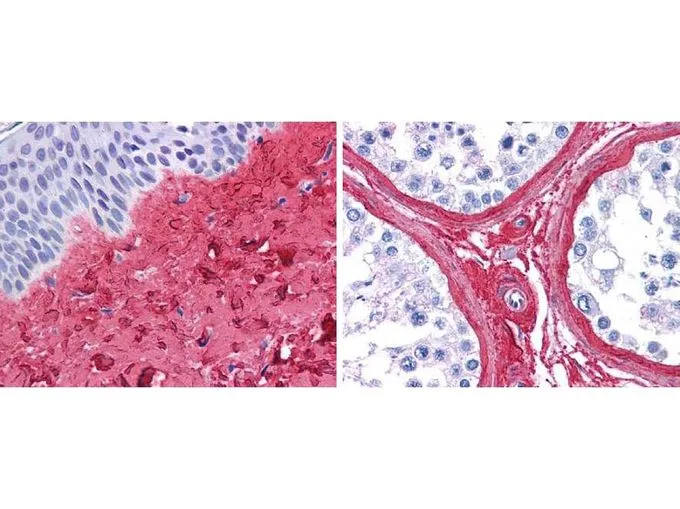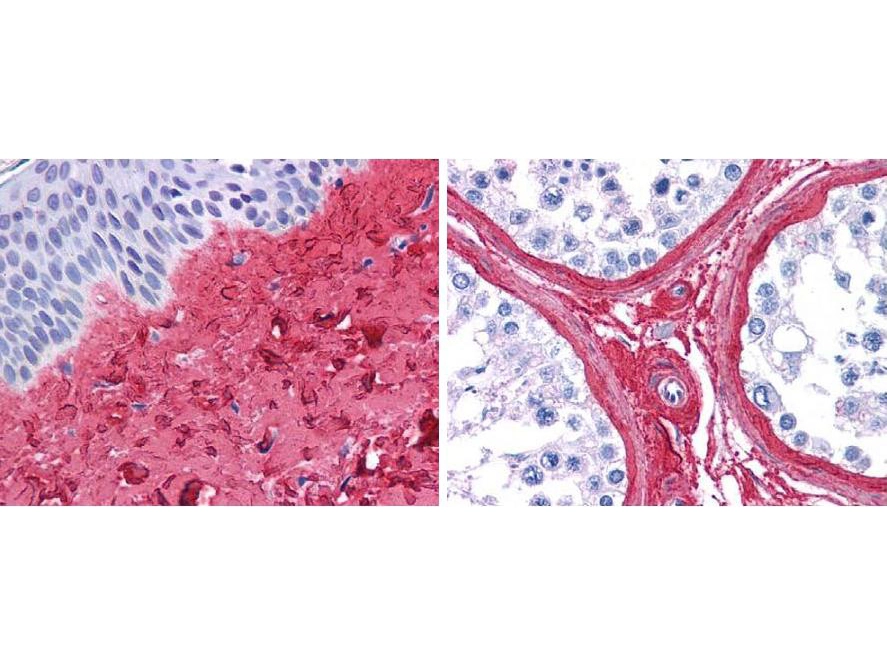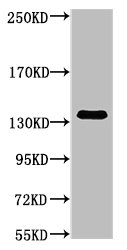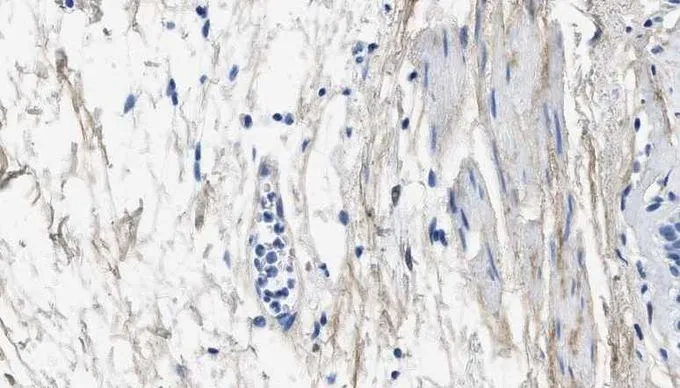
Paraffin-embedded human bronchus tissue immunostained with GTX60940
Collagen III antibody [1E7-D7/Col3]
GTX60940
ApplicationsWestern Blot, ELISA, ImmunoHistoChemistry, ImmunoHistoChemistry Frozen, ImmunoHistoChemistry Paraffin
Product group Antibodies
TargetCOL3A1
Overview
- SupplierGeneTex
- Product NameCollagen III antibody [1E7-D7/Col3]
- Delivery Days Customer9
- ApplicationsWestern Blot, ELISA, ImmunoHistoChemistry, ImmunoHistoChemistry Frozen, ImmunoHistoChemistry Paraffin
- CertificationResearch Use Only
- ClonalityMonoclonal
- Clone ID1E7-D7/Col3
- ConjugateUnconjugated
- Gene ID1281
- Target nameCOL3A1
- Target descriptioncollagen type III alpha 1 chain
- Target synonymsEDS4A, EDSVASC, PMGEDSV, collagen alpha-1(III) chain, Ehlers-Danlos syndrome type IV, autosomal dominant, alpha-1 type III collagen, alpha1 (III) collagen, collagen, fetal, collagen, type III, alpha 1
- HostMouse
- IsotypeIgG1
- Protein IDP02461
- Protein NameCollagen alpha-1(III) chain
- Scientific DescriptionThis gene encodes the pro-alpha1 chains of type III collagen, a fibrillar collagen that is found in extensible connective tissues such as skin, lung, uterus, intestine and the vascular system, frequently in association with type I collagen. Mutations in this gene are associated with Ehlers-Danlos syndrome types IV, and with aortic and arterial aneurysms. Two transcripts, resulting from the use of alternate polyadenylation signals, have been identified for this gene. [provided by R. Dalgleish, Feb 2008]
- Storage Instruction2°C to 8°C
- UNSPSC12352203
References
- Isoflavone daidzein ameliorates renal dysfunction and fibrosis in a postmenopausal rat model: Intermediation of angiotensin AT1 and Mas receptors and microRNAs 33a and 27a.Read more


![IHC-Fr analysis of rat skin tissue using GTX26310 Collagen III antibody [FH-7A] at 1:8,000.](https://www.genetex.com/upload/website/prouct_img/normal/GTX26310/GTX26310_20170605_IHC-Fr_w_23060722_325.webp)
